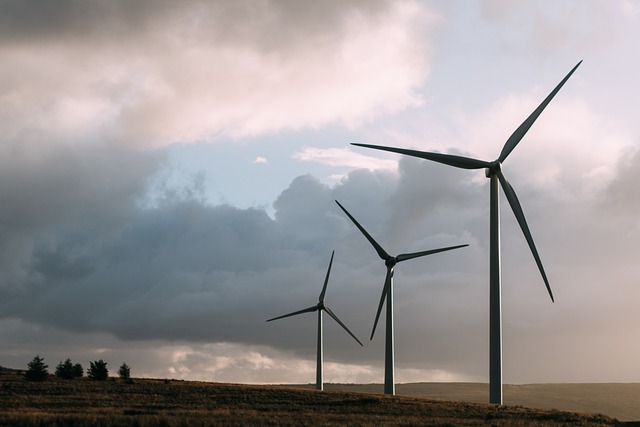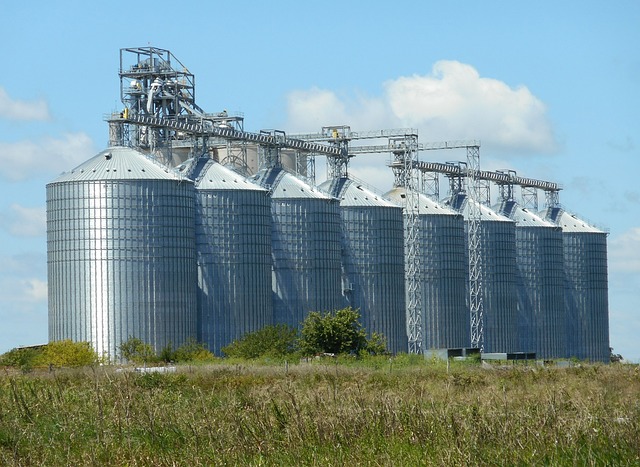A New Dawn: Energy Storage Strategies for the 21st Century
As the world grapples with the pressing challenges of climate change and energy sustainability, it becomes increasingly evident that effective energy storage strategies are essential for the 21st century. From reducing our reliance on fossil fuels to maximizing the potential of renewable energy sources, the evolution of energy storage technologies is paving the way for a cleaner, more sustainable future.
The Need for Energy Storage
At the heart of our current energy dilemma lies an inherent intermittency in renewable energy generation. Wind and solar power, while promising alternatives to fossil fuels, are not always available when demand peaks. This gap presents a compelling argument for the development of energy storage solutions capable of harnessing excess energy during periods of high production and releasing it during times of scarcity.
Moreover, energy storage not only facilitates the integration of renewable energy sources into the grid but also enhances grid stability. As energy consumption patterns evolve, the ability to store energy becomes indispensable for ensuring a reliable electricity supply. Beyond reliability, stored energy can also be a cost-effective way to manage energy use, reduce emissions, and encourage innovation in various sectors, including transportation and technology.
Types of Energy Storage Technologies
A range of energy storage technologies exists today, each with unique advantages and limitations. Broadly, these technologies can be categorized into mechanical, thermal, chemical, and electrical storage systems.
Mechanical Storage
Mechanical energy storage systems rely on physical devices to store energy. The most notable examples include pumped hydro storage and flywheels. Pumped hydro storage involves moving water to a higher elevation during times of excess energy, and then releasing it to generate electricity when needed. Flywheels are another promising technology; they store kinetic energy in a rotating mass, which can then be converted back into electricity with minimal losses.
Thermal Storage
Thermal energy storage involves storing energy in the form of heat, which can be used later to produce electricity or for heating applications. For example, concentrated solar power (CSP) systems use molten salt to store heat generated during sunny days, allowing for energy production even when the sun is not shining. This method increases the viability of solar energy and can provide a steady supply to the grid.
Chemical Storage
The most common chemical storage technology is batteries. Lithium-ion batteries, for instance, have revolutionized the way we store energy, providing a compact, efficient solution for electric vehicles and portable electronics. Emerging technologies, such as flow batteries and solid-state batteries, hold vast potential for long-duration storage and increased safety, respectively.
Electrical Storage
Electrical storage solutions, including supercapacitors and ultra-capacitors, store energy in an electric field and can discharge power very quickly. While they typically cannot store energy for long periods, they offer rapid response times and are useful for applications requiring short bursts of energy, such as stabilizing grid fluctuations.
Innovative Approaches to Energy Storage
Beyond traditional energy storage concepts, innovative approaches are emerging that blend technology, sustainability, and economics. These creative solutions aim to address the complexities of energy storage in the evolving energy landscape.
Grid-Scale Storage Solutions
Grid-scale battery installations are becoming increasingly prevalent, enabling the integration of renewable sources into existing power grids. Utilities and energy providers are investing in large-scale battery facilities, which can store significant amounts of energy to balance supply and demand effectively. These installations are crucial for mitigating the effects of renewable energy variability and ensuring grid resilience.
Distributed Energy Systems
As the trend of decentralization in energy production grows, distributed energy storage systems have emerged. These systems involve storage technologies placed closer to the point of energy consumption, such as homes and businesses. By enabling localized energy storage, consumers can become more energy-independent while also contributing to grid stability. Technologies such as home solar battery systems allow homeowners to store energy generated during the day and use it at night, reducing their carbon footprint.
Battery Recycling and Second-Life Applications
As battery technologies proliferate, the issue of waste management becomes pressing. The lifecycle of batteries must be considered from production through to eventual disposal. Innovations in battery recycling and second-life applications are gaining momentum. By repurposing end-of-life batteries for stationary storage solutions, we can extend their usefulness while mitigating environmental impacts. This approach can significantly reduce the overall carbon footprint of battery manufacturing by delaying the need for new materials.
Policy and Regulatory Framework
As energy storage technologies evolve, the support of policy frameworks is essential to their successful deployment. Governments worldwide are beginning to recognize the importance of energy storage as a critical component in achieving energy security and sustainability goals. Regulations that incentivize investment in energy storage, promote research and development, and support renewable energy integration can help fast-track these technologies to market.
Moreover, mechanisms such as carbon pricing and renewable energy credits can create more favorable economic conditions for both manufacturers and consumers. Such policies will drive the adoption of energy storage solutions and clarify the role these technologies will play in the transition to a sustainable energy future.
Challenges Ahead
While the progress in energy storage technologies is promising, several challenges remain that need to be addressed. The high cost of energy storage systems, particularly batteries, continues to be a significant barrier. However, as research and development efforts continue, and economies of scale are realized, prices are likely to decline.
Another challenge is the limited lifespan of certain storage technologies. For example, lithium-ion batteries degrade over time, reducing their capacity to store energy. Addressing this issue through research into advanced materials and alternative chemistries will be essential for the long-term viability of energy storage solutions.
The Future of Energy Storage
The future trajectory of energy storage technologies holds incredible promise. As the demand for sustainable energy solutions grows, new innovations will continue to emerge. The integration of artificial intelligence and machine learning into energy storage systems will optimize their performance and efficiency. Predictive analytics will enable better demand forecasting, allowing for a more effective management of energy resources.
Moreover, the convergence of energy storage with electric mobility presents exciting opportunities. As electric vehicles become more widespread, the batteries utilized in these vehicles can serve as mobile energy storage units. Vehicle-to-grid technology enables EVs to discharge their stored energy back into the grid, providing a new layer of flexibility and resilience to power systems.
Conclusion
The journey toward a sustainable energy future necessitates a robust approach to energy storage strategies. As we move forward in this 21st century, embracing a diverse array of storage technologies and innovative solutions will be pivotal. Investing in research, supporting sensible policies, and fostering collaboration across sectors will accelerate the transition to a greener world.
In conclusion, energy storage is not merely an option, but an imperative in the fight against climate change. A new dawn of understanding and implementation of energy storage strategies will ensure that we harness the full potential of renewable energy sources, leading us toward a sustainable and resilient future.










